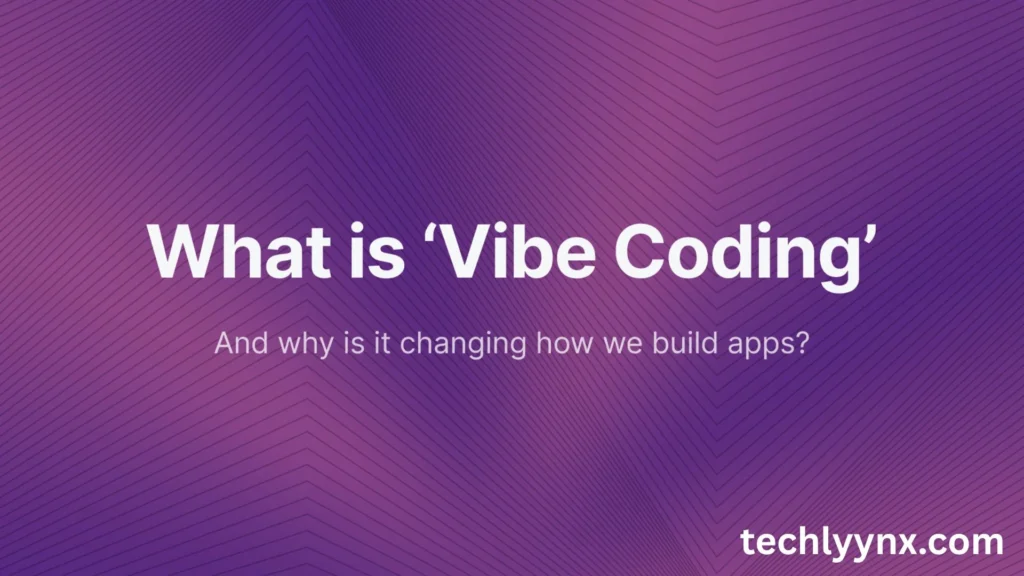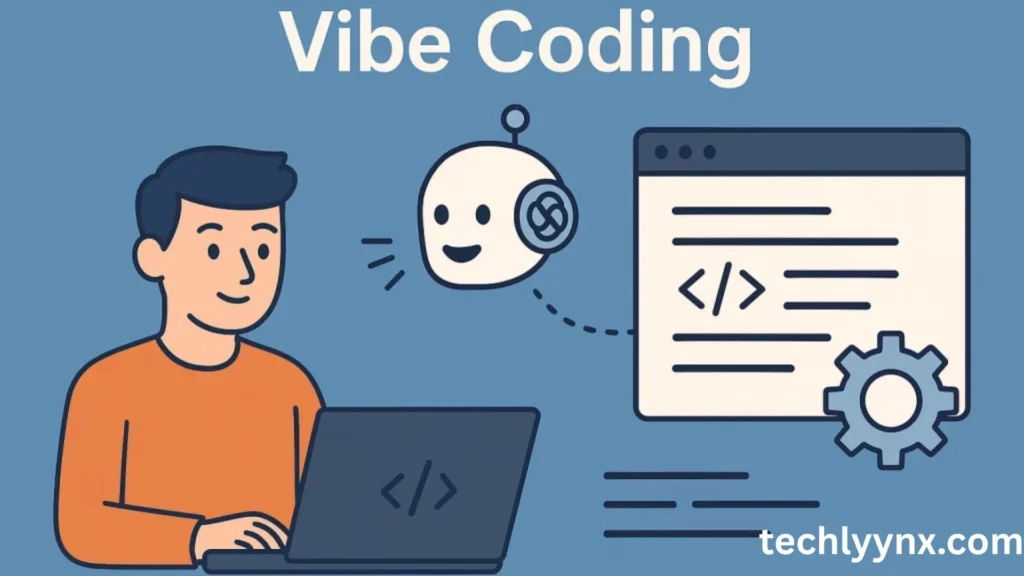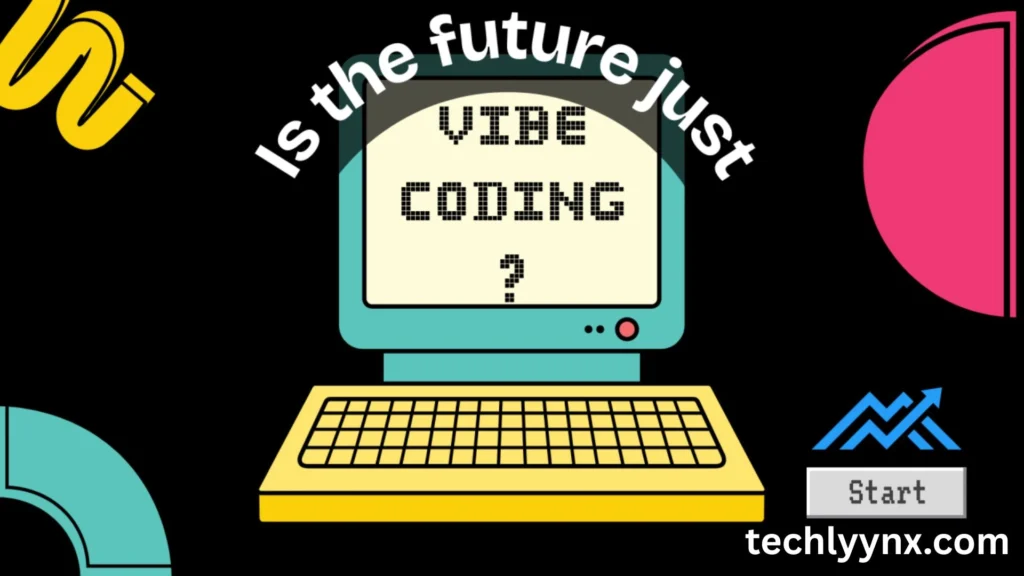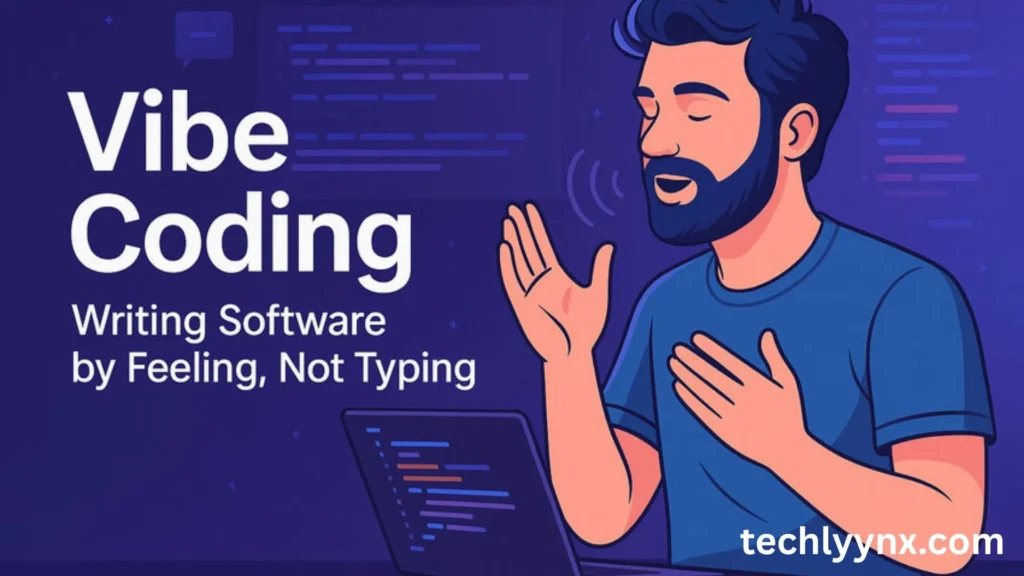Programming is a rapidly changing field. Vibe coding is a new technique that is beginning to change the way we create software as artificial intelligence becomes a part of the developer’s arsenal. The days of creating digital products just by writing thousands of lines of code are long gone. Natural language is now being used by developers and even non-programmers to “talk” to AI technologies and produce functional code.
Is traditional typing coming to an end? We’ll look at vibe coding’s definition, operation, significance, and potential future without keyboards in this post.
What Is Vibe Coding?

The practice of developing software by merely stating your goals in simple terms is known as “vibe coding.” The developer engages with an AI model, such ChatGPT, Claude, or a dedicated coding assistant, and allows it to generate the code rather of writing each line by hand.
Imagine requesting that the AI create a complete project setup with functional features when you say, “Build me a to-do list app with reminders and a dark mode.” That is an example of vibe coding. Shortcuts are only one aspect of it; another is a shift in programming mindset. It allows for rapid iteration, innovation, and experimentation without becoming bogged down with syntax and debugging.
How It Works?

Vibe coding is a straightforward concept with potentially potent results. The developer starts with an objective or concept, uses natural language to express it to an AI, and then gets code in return. After that, the user has the option to edit specific areas of the program, ask the AI to explain its code, or even tweak the request.
“Create a login form with email and password fields, and add error handling,” is an example of what a user might say. The AI provides usable HTML, CSS, and JavaScript in response. Compared to traditional methos, this method enables people to get from idea to prototype far more quickly.
The AI behind this technique is trained on billions of lines of code and natural language. It understands patterns, best practices, and even common bugs. This makes vibe coding more than just a gimmick—it’s an effective development strategy, especially for rapid prototyping.
Benefits of Vibe Coding
Vibe coding is becoming more and more popular in tech groups for a number of reasons:
Speed: By starting with pre-made components and avoiding boilerplate code, developers can build and test more quickly.
Accessibility: Without formal training, non-programmers can contribute to the development of tools, websites, or apps.
Creativity: Developers concentrate on concepts and functionalities rather than syntax. Innovation is thereby unlocked.
Learning: By asking questions in real time, beginners can use vibe coding to examine the line-by-line construction of apps.
With these benefits, it’s easy to see why vibe coding is being adopted by solo creators, startups, and even enterprise teams. It reduces the entry barrier to coding and allows users to experiment freely with their ideas.
Will Vibe Coding Replace Developers?

Whether vibe coding will render human programmers obsolete is a frequent worry. The answer is no, at least not in the near future, despite the technology’s strength.
Vibe coding changes the job of the developer. The developer becomes more of a designer, tester, and guide rather than creating each loop, function, and style from the ground up. The human gives the AI instructions, checks the results, and makes original choices. Current AI is still unable to perform that task well on its own.
Furthermore, vibe coding isn’t a panacea. Deep technical expertise is still needed for large-scale systems, security, performance optimization, and specialized algorithms. Vibe coding, however, may help even in these areas by managing monotonous activities and making suggestions for enhancements.
It’s more of a collaboration than a replacement. Think of it as having an incredibly fast and helpful intern who works 24/7 and never gets tired.
Getting Started
You don’t need sophisticated training or costly equipment to try vibe coding. There are numerous platforms that enable this approach.
ChatGPT (Developer/Code Interpreter mode): Perfect for feature testing and short scripts
An AI-powered IDE that facilitates vibe-based development is called Replit Ghostwriter.
GitHub Copilot: Responds to comments as prompts and helps with autocomplete and code recommendations while you type.
Claude: Accurately completes longer coding assignments and complicated requests.
Understanding how to communicate with the AI successfully is essential to making the most of vibe coding. Give precise, detailed directions first. Refine your instruction or ask the AI to correct specific areas if the outcome doesn’t meet your expectations.
You can also ask the AI to explain its code or suggest better alternatives. Over time, you’ll build a habit of guiding the AI instead of battling with your keyboard.
Is this going to be our Future?

Though it’s still relatively new, vibe coding is already changing the way we think about programming. Although it doesn’t completely replace traditional development, it does present an intriguing new choice for everyone creating software, including startups, hobbyists, and corporate teams.
Vibe coding is probably going to get much more powerful as AI advances. Visual editors, voice input, and cloud service integration that launches your apps instantly are all possible shortly.
The best thing about vibe coding is that it allows you to concentrate on your thoughts rather than your typing abilities. It provides an innovative, quick, and empowering approach to get started, regardless of your level of experience as a developer or your level of curiosity about creating your first app.
Final Thoughts
Typing isn’t going away completely, but the need to hand-code everything is definitely fading. Vibe coding shows us a new path—one where communication, creativity, and collaboration take the lead. If you’ve ever had an idea but didn’t know how to code it, this might be your moment. Just describe what you want—and let the AI handle the rest.

